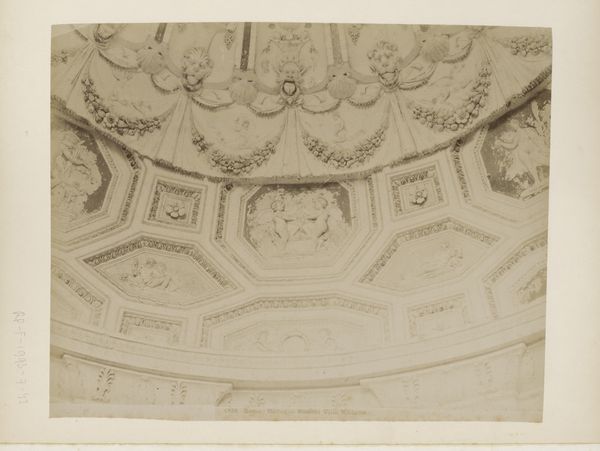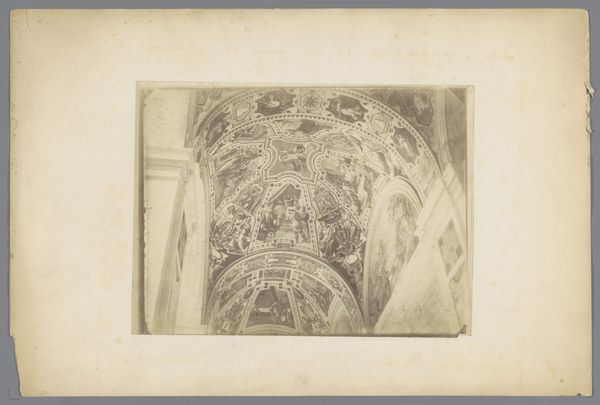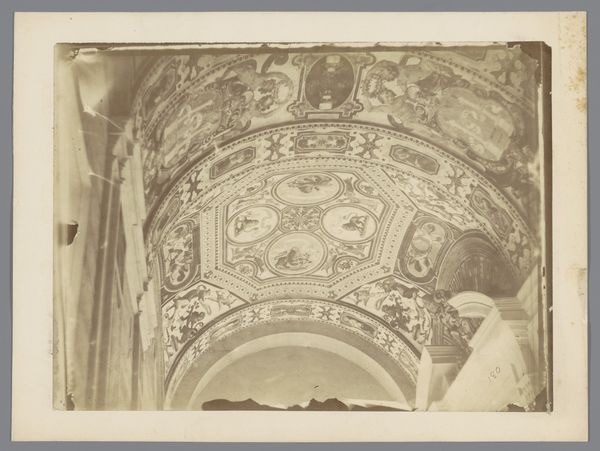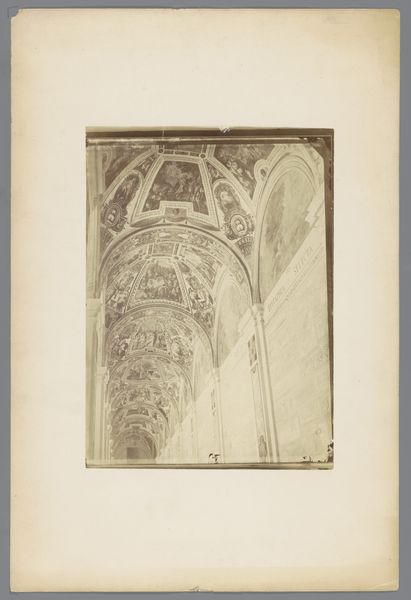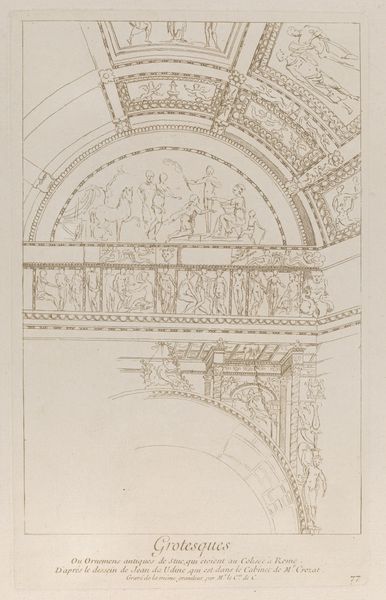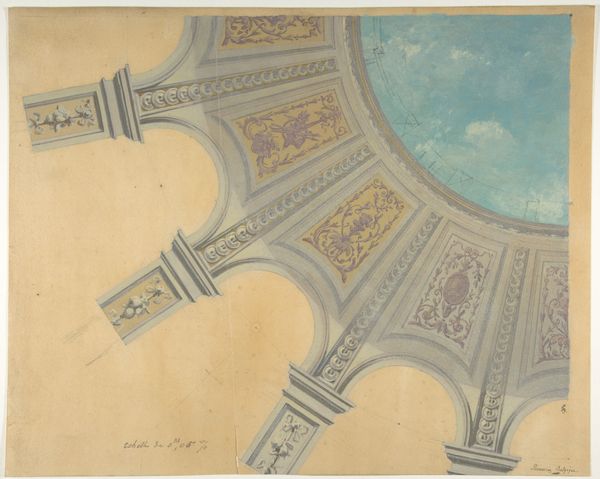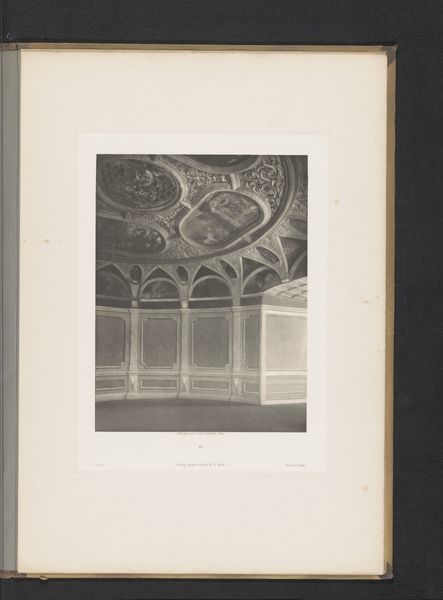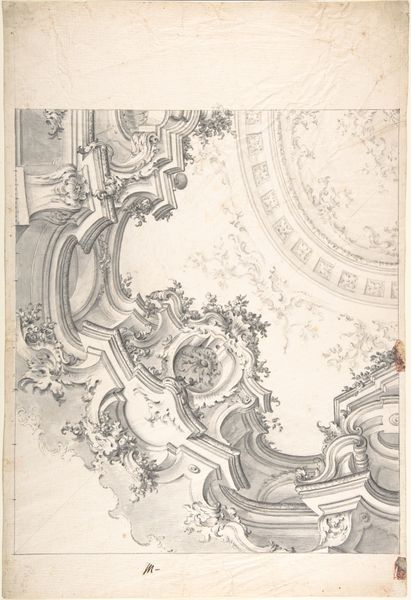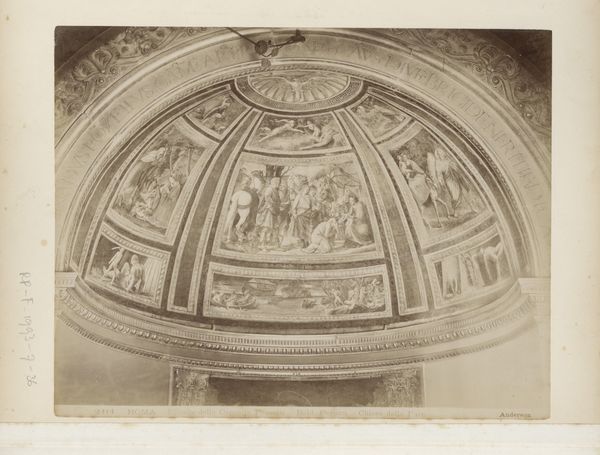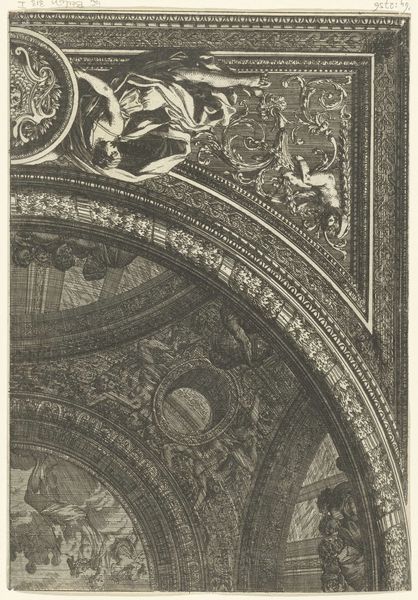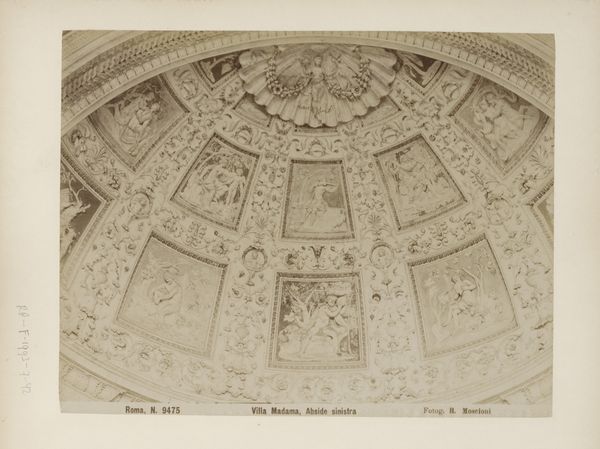
print, photography, architecture
# print
#
photography
#
geometric
#
ancient-mediterranean
#
architecture
Dimensions: height 251 mm, width 195 mm
Copyright: Rijks Museum: Open Domain
Curator: Looking up at this print of the Villa Madama in Rome, I'm immediately struck by the incredible artistry frozen in time. It almost feels like a glimpse into another world. Editor: The first thing that catches my eye is the sense of weight and history. The monochrome palette enhances this effect, really situating it as a historical document, particularly when considering the sociopolitical dynamics around historical preservation and documentation in the late 19th century when it was captured. Curator: Absolutely. Romualdo Moscioni, likely sometime between 1868 and 1900, captured a "Detail van het gewelf," which translates to a detail of the vault or ceiling, showcasing this ornate architectural detail. And you’re right, the photography does lend this incredible immediacy, almost as though we're looking up ourselves, even now. It looks airy despite the clear and dense ornamental language. Editor: It's interesting you mention the architectural aspect, because that brings to mind the role of power and patronage in Renaissance architecture, Villa Madama was originally commissioned by Cardinal Giulio de' Medici. How much was he concerned about communicating status through architectural marvels? The artist here, Moscioni, documented, essentially reproducing the narratives. Curator: It's all layers, isn’t it? You’ve got Raphael originally designing and Giulio Romano continuing his vision. Each coffer, each relief, it's like a chapter in an epic poem written in stone and paint. You can almost hear echoes of Latin and see the flickering of candlelight reflecting in the frescos. I'm just drawn to its dreamlike, floating quality! Editor: Speaking of epics, how do the mythical narratives represented visually feed into a broader European tradition of romanticizing the ancient world, particularly in a way that occludes the often brutal realities of those eras and the unequal power dynamics reflected in the elite consumption and curation of culture, something which photography made easier and more broadly disseminated? Curator: Exactly. It's both a portal to the past and a mirror reflecting our own fascinations and blind spots. This particular artwork allows us to reflect on these multifaceted readings of class and its relationship to artistic and photographic labor across temporalities. Editor: So, it’s both a source of aesthetic awe and critical inquiry!
Comments
No comments
Be the first to comment and join the conversation on the ultimate creative platform.

